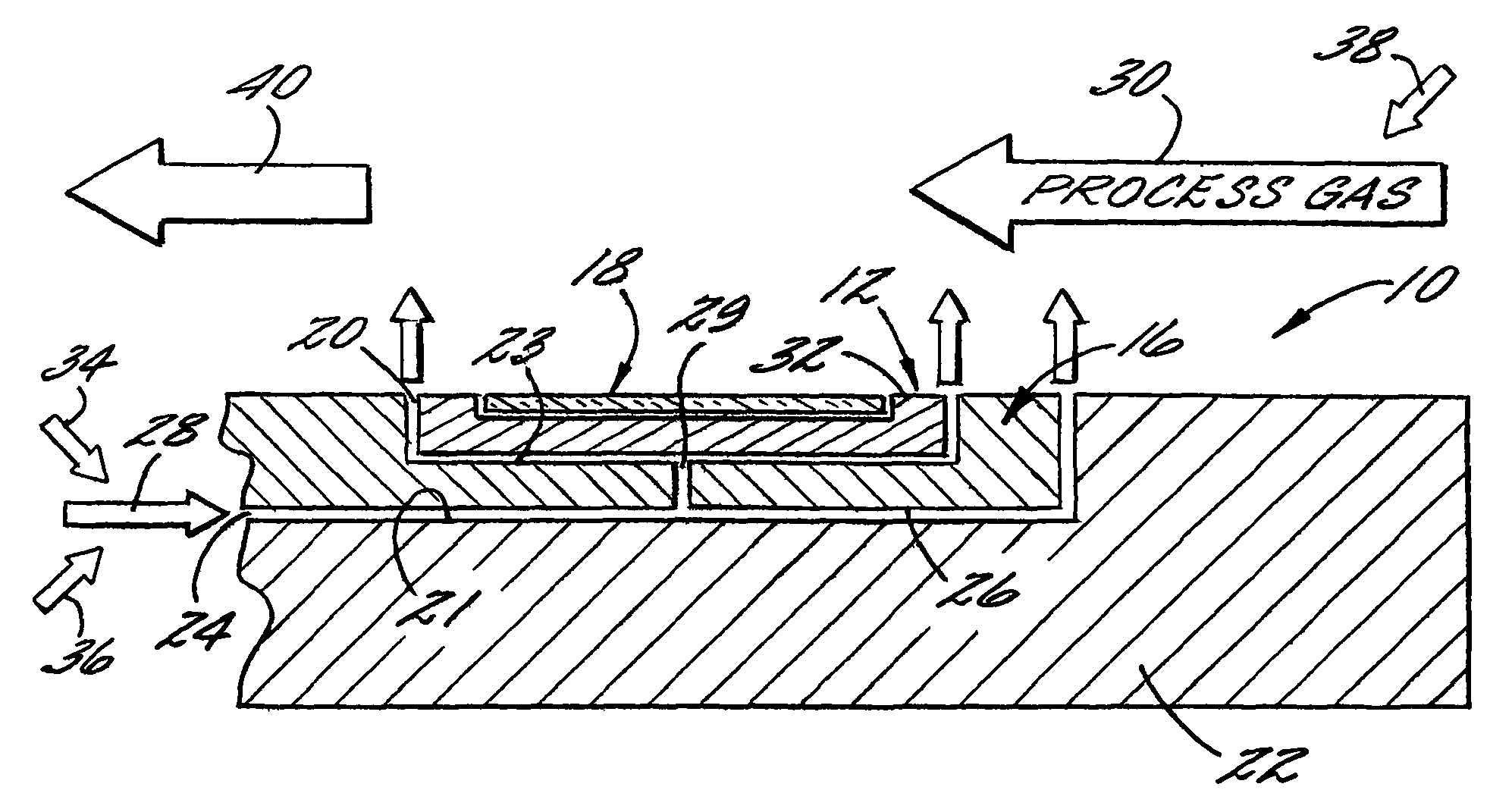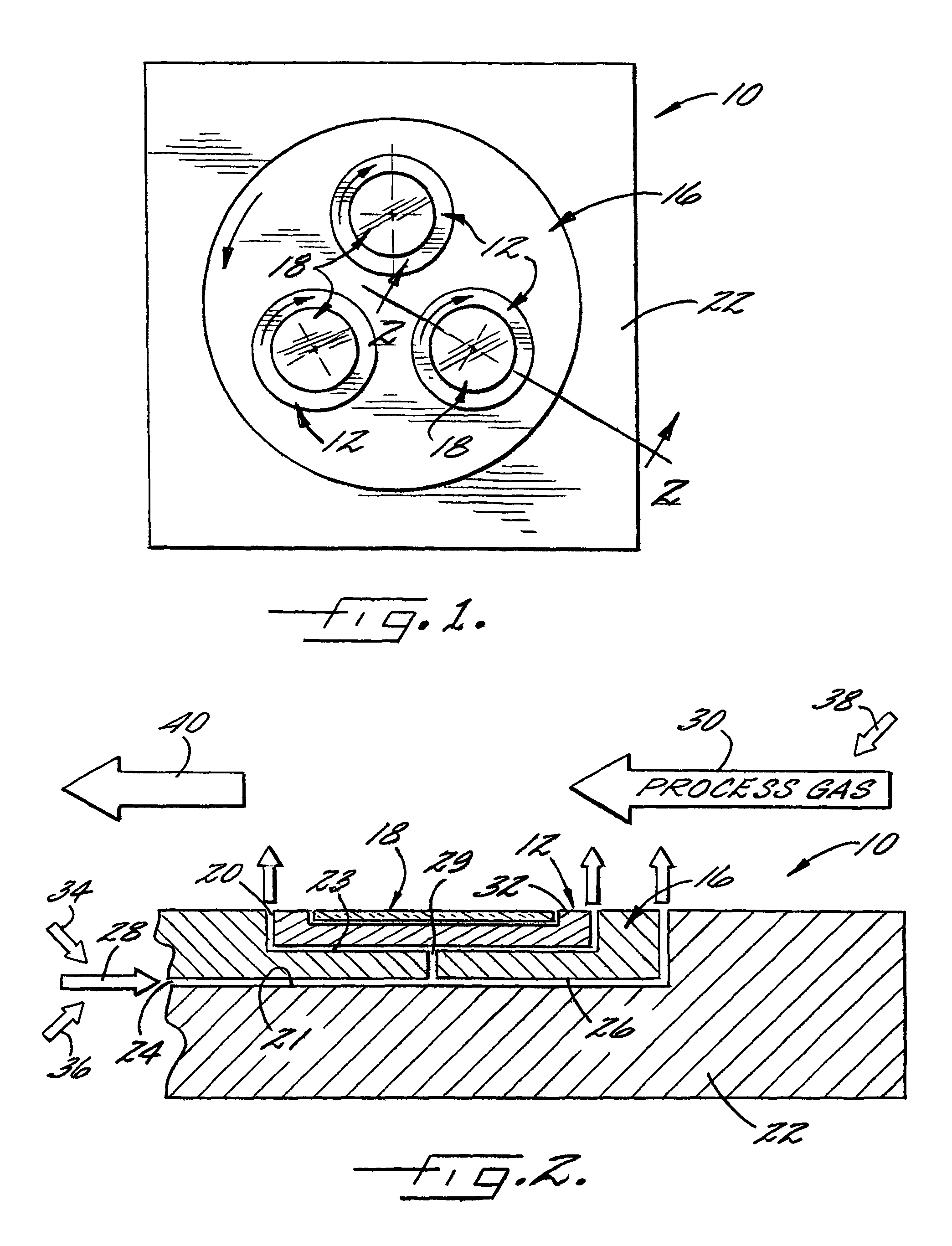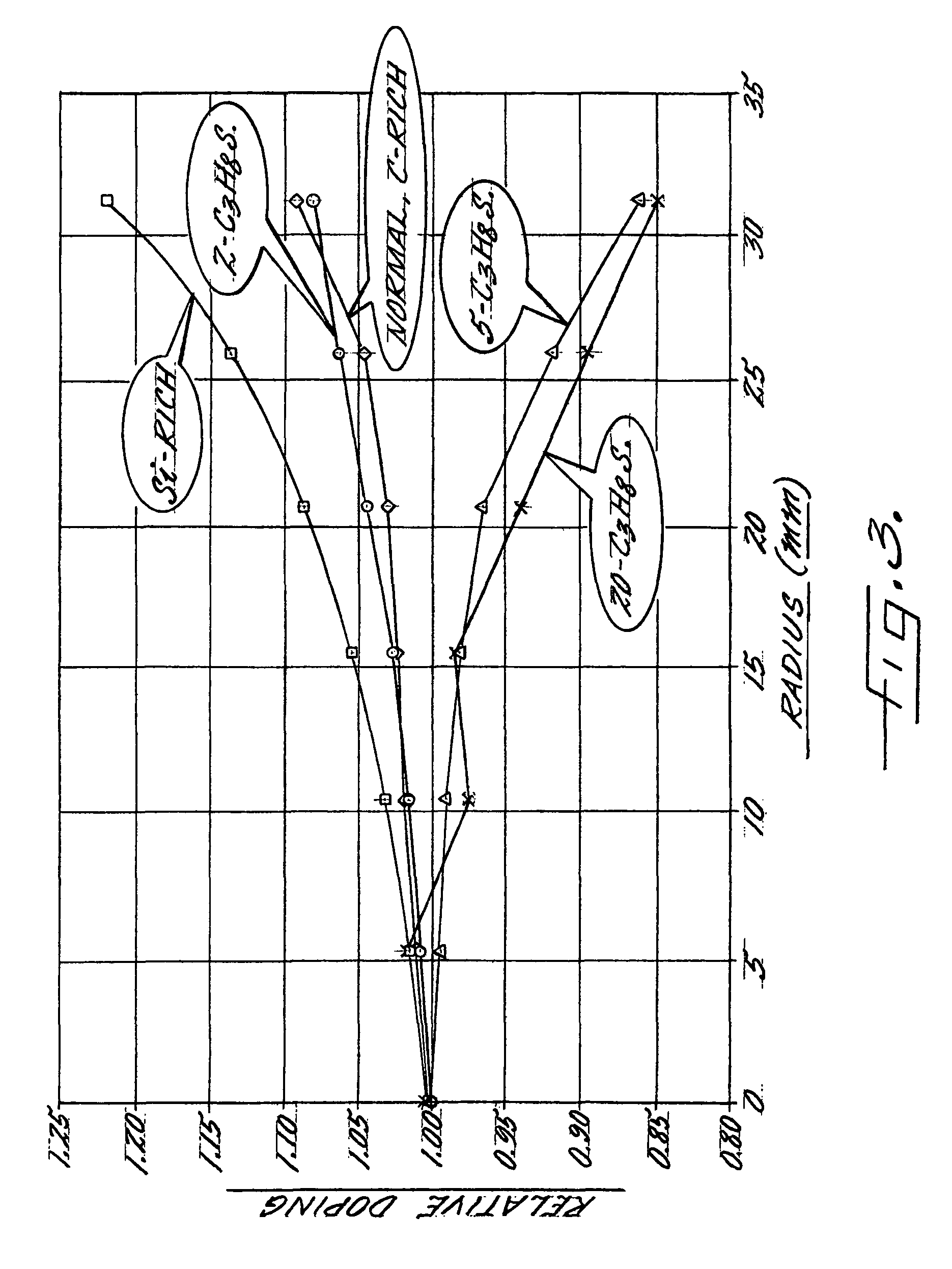Directed reagents to improve material uniformity
a technology of reagents and uniformity, applied in the direction of polycrystalline material growth, crystal growth process, condensed vapor, etc., can solve the problem of low nitrogen dopant incorporation efficiency
- Summary
- Abstract
- Description
- Claims
- Application Information
AI Technical Summary
Benefits of technology
Problems solved by technology
Method used
Image
Examples
example 1
[0043]A measure of graphite dust was placed in the “moat” area (e.g., the indented top surface of a platter) to allow local introduction of a carbon rich gas through reaction with H2 in the carrier gas at the wafer edge. After loading three wafers into the system, one wafer in the satellite surrounded by the dust and two wafers in satellites removed from the dust, SiC MESFET epitaxial structures were grown on all three wafers. The doping in the center of each wafer was approximately the same. The doping profiles, however, revealed a 6% average doping increase on the edge of the wafer processed while surrounded by the dust filled moat, while the wafers processed near standard moats demonstrated 12% and 16% dopant incorporation increase on the wafer edges, respectively. This example demonstrates the ability to locally control the stoichiometry, as well as the dopant incorporation levels, by introducing a second reactant near the wafer edge.
example 2
[0044]With reference to FIG. 3, a series of tests were conducted, with a reaction environment ranging from silicon-rich to carbon-rich. FIG. 3 is a graph representing the cross-wafer doping profile of the various tests. The x-axis of the table represents the wafer radius in millimeters, with 0 being the center of the wafer and 35 being the perimeter of the wafer. The y-axis of the table represents relative nitrogen dopant incorporation. To take advantage of the improved stoichiometry control provided by the present invention, five different tests were run, beginning with a silicon-rich reactant stream, followed by including propane in the drive gas stream in amounts of 2, 5, and 20 sccm as seen in the respective curves. As is known in the art, sccm is the abbreviation for a standard cubic centimeter per minute. Stated differently, one sccm is one cubic centimeter of gas per minute at 0° C. and atmospheric pressure. As can be seen in FIG. 3, the cross wafer doping trend inverts betwe...
PUM
| Property | Measurement | Unit |
|---|---|---|
| n-type conductivity | aaaaa | aaaaa |
| temperature | aaaaa | aaaaa |
| chemical concentration | aaaaa | aaaaa |
Abstract
Description
Claims
Application Information
 Login to View More
Login to View More - R&D
- Intellectual Property
- Life Sciences
- Materials
- Tech Scout
- Unparalleled Data Quality
- Higher Quality Content
- 60% Fewer Hallucinations
Browse by: Latest US Patents, China's latest patents, Technical Efficacy Thesaurus, Application Domain, Technology Topic, Popular Technical Reports.
© 2025 PatSnap. All rights reserved.Legal|Privacy policy|Modern Slavery Act Transparency Statement|Sitemap|About US| Contact US: help@patsnap.com



